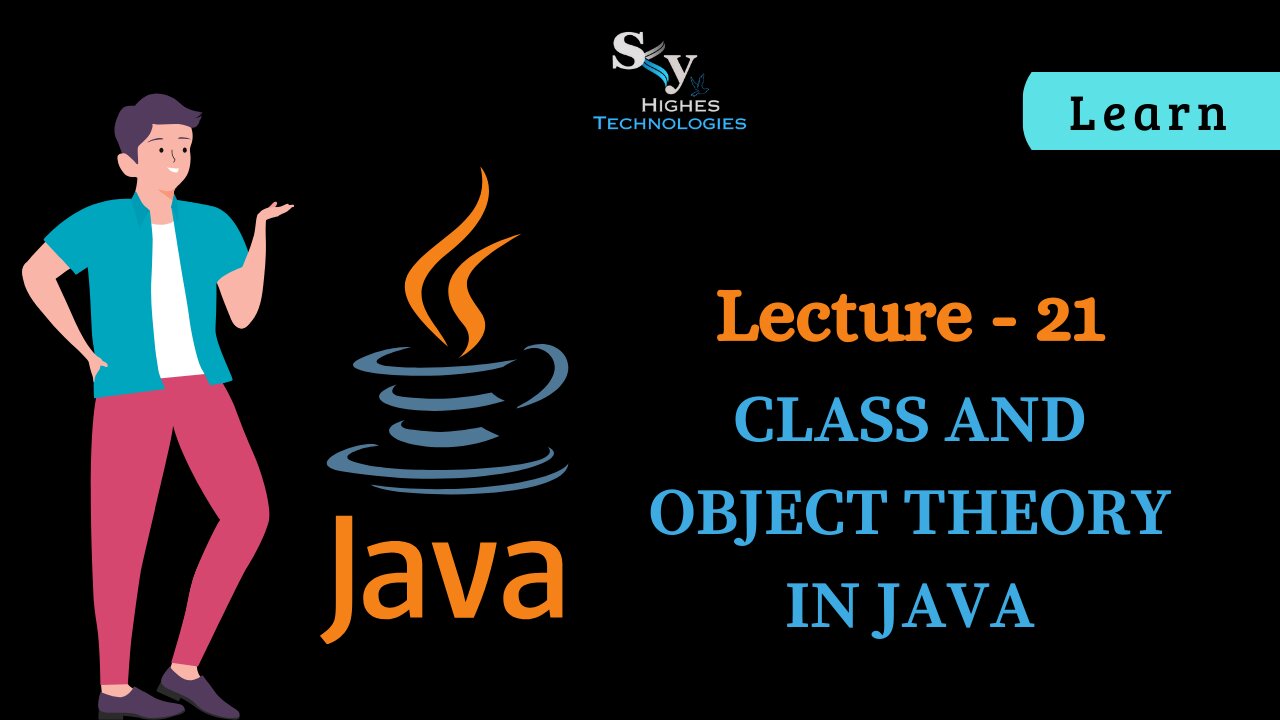Premium Only Content

#21 Class and Object Theory in JAVA | Skyhighes | Lecture 21
Classes and Objects: Foundations of OOP
Object-Oriented Programming (OOP): A programming paradigm that revolves around "objects" as fundamental building blocks. It models real-world entities and their relationships, promoting code reusability, maintainability, and modularity.
Classes: Blueprints or templates that define the characteristics (attributes) and behaviors (methods) of objects. They specify what objects of that class will look like and what they can do.
Objects: Instances of classes. They are concrete entities with specific state (values of their attributes) and the ability to perform actions (methods).
Key Concepts:
Class Declaration:
Use the class keyword followed by the class name.
Enclose attributes (variables) and methods (functions) within curly braces.
Java
public class Dog {
String breed;
int age;
void bark() {
System.out.println("Woof!");
}
}
Use code with caution. Learn more
Object Creation (Instantiation):
Use the new keyword followed by the class name and a constructor call.
Java
Dog myDog = new Dog();
Use code with caution. Learn more
Attributes (Member Variables):
Represent the data associated with an object.
Define them within the class using various data types (e.g., int, String, boolean).
Methods (Member Functions):
Define the actions that objects can perform.
Contain code blocks that operate on the object's attributes and other data.
Accessing and Modifying Object State:
Use the dot (.) operator to access attributes and methods of an object.
Java
myDog.breed = "Labrador";
myDog.bark(); // Output: "Woof!"
Use code with caution. Learn more
Understanding the Relationship:
A class is like a recipe for creating objects.
Each object is a unique instance of the class, with its own set of attribute values.
Objects interact with each other by calling each other's methods.
Benefits of OOP:
Encapsulation: Bundling data and behavior within objects, protecting data integrity.
Inheritance: Creating new classes (subclasses) that inherit properties and behaviors from existing classes (superclasses), promoting code reusability.
Polymorphism: Objects of different classes responding to the same method call in different ways, allowing for flexible and adaptable code.
Remember: Classes and objects are fundamental to OOP and essential for structuring Java programs effectively. Understanding their relationship and properties is crucial for building well-organized and maintainable software.
-
 1:26:52
1:26:52
The Quartering
1 hour agoFAA Bans Drones, Elon Musk For Speaker Of The House, Fani Willis Humiliated, Disney Drops Woke!
40.1K3 -
 1:24:42
1:24:42
Russell Brand
3 hours agoHow the State Department Shapes Global Narratives
91K47 -
 50:18
50:18
Ben Shapiro
2 hours agoEp. 2108 - Musk, Trump Team Up To KILL Pork Bill
34.6K18 -
 1:52:02
1:52:02
vivafrei
6 hours agoLock Liz Cheney Up! Spending Bill MADNESS! Not Just Pork, but GAIN OF FUNCTION! & MORE! Viva Frei
48.8K11 -
 55:51
55:51
The Dan Bongino Show
5 hours agoWe Are NOT Falling For This Again (Ep. 2391) - 12/19/2024
673K2.69K -
 1:57:58
1:57:58
The Charlie Kirk Show
2 hours agoAmericaFest: Day 1 | Bannon, Maloney, Posobiec, O'Keefe | 12.19.24
84.9K4 -
 50:08
50:08
TheAlecLaceShow
4 hours agoGuests: AG Andrew Bailey & Dr. Michael Schwartz | DOGE Shuts Down Speaker’s CR | The Alec Lace Show
25.8K1 -
 LIVE
LIVE
hambinooo
2 hours agoPUBG DOMINATION
58 watching -
 1:03:06
1:03:06
The Rubin Report
4 hours ago‘Piers Morgan’ Goes Off the Rails as 'TYT' Host Attacks Dave with Nasty Insults
60.9K82 -
 1:47:50
1:47:50
Steven Crowder
4 hours agoLWC Christmas Special 2024 | Giving Back with Santa Crowder
143K414